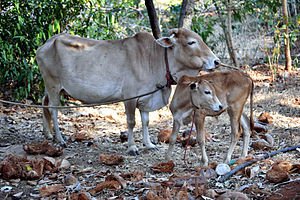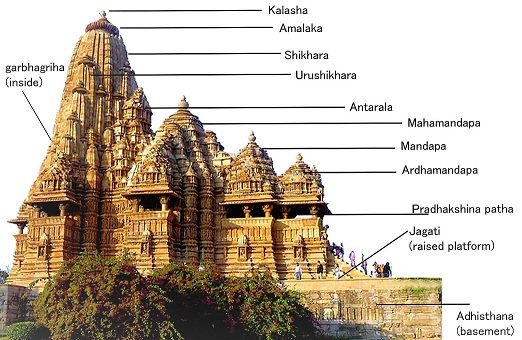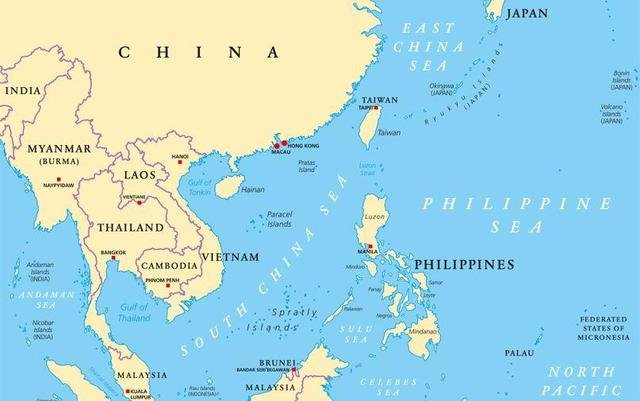
January 20 2024 Prelims Practice Questions (PPQs)
Subscribe to Never Miss an Important Update! Assured Discounts on New Products!
Must Join PMF IAS Telegram Channel & PMF IAS History Telegram Channel
- These Prelims Practice Questions (PPQs) are based on PMF IAS Daily Current Affairs.
- The daily current affairs are uploaded every day by 8 PM. You can read the Daily Current Affairs from here.
- Subscribers of the “Current Affairs” course can Download Daily Current Affairs in PDF/DOC from here.
[Quiz] Daily Prelims Practice Questions (PPQs) – January 20 2024
0 of 8 questions completed
Questions:
- 1
- 2
- 3
- 4
- 5
- 6
- 7
- 8
Information
These MCQs are based on PMF IAS Daily Current Affairs. The daily current affairs are uploaded every day by 8 PM. You can read the Daily Current Affairs from here. Subscribers of the “Current Affairs” course can Download Daily Current Affairs in PDF/DOC from here.
You have already completed the Test before. Hence you can not start it again.
Test is loading...
You must sign in or sign up to start the Test.
You have to finish following quiz, to start this Test:
Your results are here!! for" [Quiz] Daily Prelims Practice Questions (PPQs) – January 20 2024 "
0 of 8 questions answered correctly
Your time:
Time has elapsed
Your Final Score is : 0
You have attempted : 0
Number of Correct Questions : 0 and scored 0
Number of Incorrect Questions : 0 and Negative marks 0
| Average score |
|
| Your score |
|
-
Not categorized
You have attempted: 0
Number of Correct Questions: 0 and scored 0
Number of Incorrect Questions: 0 and Negative marks 0
| Pos. | Name | Entered on | Points | Result |
|---|---|---|---|---|
| Table is loading | ||||
| No data available | ||||
- 1
- 2
- 3
- 4
- 5
- 6
- 7
- 8
- Answered
- Review
-
Question 1 of 8
1. Question
Q1. {Prelims – Awards} Consider the following statements:
- Pradhan Mantri Rashtriya Bal Puraskar is awarded annually by the Ministry of Women and Child Development.
- NRIs are also eligible for receiving Bal Kalyan Puraskar if they have worked for a minimum of 7 years for the cause of children in India.
- 100% Government funded Institutions are also eligible for receiving Bal Kalyan Puraskar.
How many of the above statement(s) is/are correct?
Correct
Explanation
Statement 1 is correct
- Pradhan Mantri Rashtriya Bal Puraskar is awarded annually by the Ministry of Women and Child Development (MoWCD).
- The award is given for outstanding achievements in 7 categories: Bravery, Art & Culture, Environment, Innovation, Science & Technology, Social Service, and Sports.
- The age group of awardees is 5 – 18 years.
- Each awardee receives a Medal, a Certificate, and a Citation Booklet.
Statement 2 is incorrect
- Bal Kalyan Puraskar is given as recognition to individuals and institutions contributing significantly to child development, child protection, and child welfare.
- Indian Citizen residing in India, aged 18 years or above (as of 31st August of the respective year), with a minimum of 7 years of work for the cause of children.
Statement 3 is incorrect
- For an Institution to receive Bal Kalyan Puraskar it Should not be entirely funded by the government and has been in the field of child welfare for 10 years.
Answer: (a) Only one; Difficulty Level: Medium
Incorrect
Explanation
Statement 1 is correct
- Pradhan Mantri Rashtriya Bal Puraskar is awarded annually by the Ministry of Women and Child Development (MoWCD).
- The award is given for outstanding achievements in 7 categories: Bravery, Art & Culture, Environment, Innovation, Science & Technology, Social Service, and Sports.
- The age group of awardees is 5 – 18 years.
- Each awardee receives a Medal, a Certificate, and a Citation Booklet.
Statement 2 is incorrect
- Bal Kalyan Puraskar is given as recognition to individuals and institutions contributing significantly to child development, child protection, and child welfare.
- Indian Citizen residing in India, aged 18 years or above (as of 31st August of the respective year), with a minimum of 7 years of work for the cause of children.
Statement 3 is incorrect
- For an Institution to receive Bal Kalyan Puraskar it Should not be entirely funded by the government and has been in the field of child welfare for 10 years.
Answer: (a) Only one; Difficulty Level: Medium
Unattempted
Explanation
Statement 1 is correct
- Pradhan Mantri Rashtriya Bal Puraskar is awarded annually by the Ministry of Women and Child Development (MoWCD).
- The award is given for outstanding achievements in 7 categories: Bravery, Art & Culture, Environment, Innovation, Science & Technology, Social Service, and Sports.
- The age group of awardees is 5 – 18 years.
- Each awardee receives a Medal, a Certificate, and a Citation Booklet.
Statement 2 is incorrect
- Bal Kalyan Puraskar is given as recognition to individuals and institutions contributing significantly to child development, child protection, and child welfare.
- Indian Citizen residing in India, aged 18 years or above (as of 31st August of the respective year), with a minimum of 7 years of work for the cause of children.
Statement 3 is incorrect
- For an Institution to receive Bal Kalyan Puraskar it Should not be entirely funded by the government and has been in the field of child welfare for 10 years.
Answer: (a) Only one; Difficulty Level: Medium
-
Question 2 of 8
2. Question
Q2. {Prelims – Envi – Species} Consider the following statements:
- Pulikulam Cattle is an indigenous cow breed of Tamil Nadu.
- Pulikulam Cows are excellent milkers with milk yield ranging from 5 to 8 litres per day.
- Vechur Cow is an indigenous cattle breed of Andhra Pradesh.
- National Bureau of Animal Genetic Resources is a constituent unit of the Department of Biotechnology, an attached office of the Ministry of Science and Technology.
How many of the above statement(s) is/are correct?
Correct
Explanation
Statement 1 is correct
- The cattle originated from Pulikulam, a village located in Sivaganga district of Tamil Nadu.
- The Pulikulam is a popular draught and game breed of Tamil Nadu.
- They are reared for draught and organic agricultural production, especially of spices.
Statement 2 is incorrect
- Pulikulam Cows are poor milkers, and milk yield ranges from 0.5 to 3 kg per day with an average yield of about 1.25 kg per day.
Statement 3 is incorrect
- The Vechur Cow is a rare breed of Bos indicus cattle named after the village Vechoor in Vaikom Taluk, Kottayam district of the state of Kerala.
- With an average length of 124 cm (about 4 feet and 1 inch) and height of 87 cm (about 2 feet and 10 inches), it is the smallest cattle breed in the world according to the Guinness Book of Records and is valued for the larger amount of milk it produces relative to the amount of food it requires.
- In 2000, the Vechur cow was listed on the FAO’s World Watch List of Domestic Animal Diversity, in its ‘Critical-Maintained Breeds List‘, pointing to imminent extinction as breeds are included in the list when the number of breeding females and males fall to very low levels.
- The Vechur animals were saved from extinction due to conservation efforts by Sosamma Iype, a Professor of Animal breeding and Genetics along with a team of her students.
- About 200 cows are supposed to exist today, nearly 100 of them with the Veterinary College.

Statement 4 is incorrect
- National Bureau of Animal Genetic Resources is a constituent unit of the Indian Council of Agricultural Research, an autonomous body under the Ministry of Agriculture & Farmers’ Welfare.
- The establishment of the National Bureau of Animal Genetic Resources was approved during the 4th Five-Year Plan.
- The institute is located on the campus of the National Dairy Research Institute, Karnal.
- It aims to protect and conserve indigenous farm animal genetic resources for sustainable utilization and livelihood security.
Answer: (a) Only one; Difficulty Level: Medium
Incorrect
Explanation
Statement 1 is correct
- The cattle originated from Pulikulam, a village located in Sivaganga district of Tamil Nadu.
- The Pulikulam is a popular draught and game breed of Tamil Nadu.
- They are reared for draught and organic agricultural production, especially of spices.
Statement 2 is incorrect
- Pulikulam Cows are poor milkers, and milk yield ranges from 0.5 to 3 kg per day with an average yield of about 1.25 kg per day.
Statement 3 is incorrect
- The Vechur Cow is a rare breed of Bos indicus cattle named after the village Vechoor in Vaikom Taluk, Kottayam district of the state of Kerala.
- With an average length of 124 cm (about 4 feet and 1 inch) and height of 87 cm (about 2 feet and 10 inches), it is the smallest cattle breed in the world according to the Guinness Book of Records and is valued for the larger amount of milk it produces relative to the amount of food it requires.
- In 2000, the Vechur cow was listed on the FAO’s World Watch List of Domestic Animal Diversity, in its ‘Critical-Maintained Breeds List‘, pointing to imminent extinction as breeds are included in the list when the number of breeding females and males fall to very low levels.
- The Vechur animals were saved from extinction due to conservation efforts by Sosamma Iype, a Professor of Animal breeding and Genetics along with a team of her students.
- About 200 cows are supposed to exist today, nearly 100 of them with the Veterinary College.

Statement 4 is incorrect
- National Bureau of Animal Genetic Resources is a constituent unit of the Indian Council of Agricultural Research, an autonomous body under the Ministry of Agriculture & Farmers’ Welfare.
- The establishment of the National Bureau of Animal Genetic Resources was approved during the 4th Five-Year Plan.
- The institute is located on the campus of the National Dairy Research Institute, Karnal.
- It aims to protect and conserve indigenous farm animal genetic resources for sustainable utilization and livelihood security.
Answer: (a) Only one; Difficulty Level: Medium
Unattempted
Explanation
Statement 1 is correct
- The cattle originated from Pulikulam, a village located in Sivaganga district of Tamil Nadu.
- The Pulikulam is a popular draught and game breed of Tamil Nadu.
- They are reared for draught and organic agricultural production, especially of spices.
Statement 2 is incorrect
- Pulikulam Cows are poor milkers, and milk yield ranges from 0.5 to 3 kg per day with an average yield of about 1.25 kg per day.
Statement 3 is incorrect
- The Vechur Cow is a rare breed of Bos indicus cattle named after the village Vechoor in Vaikom Taluk, Kottayam district of the state of Kerala.
- With an average length of 124 cm (about 4 feet and 1 inch) and height of 87 cm (about 2 feet and 10 inches), it is the smallest cattle breed in the world according to the Guinness Book of Records and is valued for the larger amount of milk it produces relative to the amount of food it requires.
- In 2000, the Vechur cow was listed on the FAO’s World Watch List of Domestic Animal Diversity, in its ‘Critical-Maintained Breeds List‘, pointing to imminent extinction as breeds are included in the list when the number of breeding females and males fall to very low levels.
- The Vechur animals were saved from extinction due to conservation efforts by Sosamma Iype, a Professor of Animal breeding and Genetics along with a team of her students.
- About 200 cows are supposed to exist today, nearly 100 of them with the Veterinary College.

Statement 4 is incorrect
- National Bureau of Animal Genetic Resources is a constituent unit of the Indian Council of Agricultural Research, an autonomous body under the Ministry of Agriculture & Farmers’ Welfare.
- The establishment of the National Bureau of Animal Genetic Resources was approved during the 4th Five-Year Plan.
- The institute is located on the campus of the National Dairy Research Institute, Karnal.
- It aims to protect and conserve indigenous farm animal genetic resources for sustainable utilization and livelihood security.
Answer: (a) Only one; Difficulty Level: Medium
-
Question 3 of 8
3. Question
Q3. {Prelims – In News} Consider the following statements:
- Soil-based Microbial Fuel Cells harvest electricity from bacteria that naturally give out electrons to nearby conductors.
- This soil-powered fuel cell can run forever.
- Fuel Cell uses hydrogen and oxygen gas as fuel to generate electricity through Combustion Process.
How many of the above statement(s) is/are correct?
Correct
Explanation
Statement 1 is correct
- A team led by Northwestern University developed a new fuel cell that can harvest energy from microbes living in the soil.
- Instead of using chemicals to generate electricity, they harvest electricity from bacteria that naturally give out electrons to nearby conductors.
- These electrons flow from anode to cathode to create an electric circuit.
Statement 2 is correct
- It can last forever as long as there is organic carbon in the soil for the microbes to break down.
- It can potentially be used in green infrastructure and precision agriculture applications.
- Instead of using a traditional design in which the anode and the cathode are parallel to one another, this one uses a perpendicular design, which will increase its efficiency under dry conditions.
Statement 3 is incorrect
- A fuel cell is a device that converts chemical energy into electrical energy.
- It uses hydrogen and oxygen gas as fuel to generate electricity. However, there is no combustion involved.
- Fuel cells can vary from tiny devices producing only a few watts of electricity, right up to large power plants producing megawatts.

Answer: (a) 1 and 2; Difficulty Level: Medium
Incorrect
Explanation
Statement 1 is correct
- A team led by Northwestern University developed a new fuel cell that can harvest energy from microbes living in the soil.
- Instead of using chemicals to generate electricity, they harvest electricity from bacteria that naturally give out electrons to nearby conductors.
- These electrons flow from anode to cathode to create an electric circuit.
Statement 2 is correct
- It can last forever as long as there is organic carbon in the soil for the microbes to break down.
- It can potentially be used in green infrastructure and precision agriculture applications.
- Instead of using a traditional design in which the anode and the cathode are parallel to one another, this one uses a perpendicular design, which will increase its efficiency under dry conditions.
Statement 3 is incorrect
- A fuel cell is a device that converts chemical energy into electrical energy.
- It uses hydrogen and oxygen gas as fuel to generate electricity. However, there is no combustion involved.
- Fuel cells can vary from tiny devices producing only a few watts of electricity, right up to large power plants producing megawatts.

Answer: (a) 1 and 2; Difficulty Level: Medium
Unattempted
Explanation
Statement 1 is correct
- A team led by Northwestern University developed a new fuel cell that can harvest energy from microbes living in the soil.
- Instead of using chemicals to generate electricity, they harvest electricity from bacteria that naturally give out electrons to nearby conductors.
- These electrons flow from anode to cathode to create an electric circuit.
Statement 2 is correct
- It can last forever as long as there is organic carbon in the soil for the microbes to break down.
- It can potentially be used in green infrastructure and precision agriculture applications.
- Instead of using a traditional design in which the anode and the cathode are parallel to one another, this one uses a perpendicular design, which will increase its efficiency under dry conditions.
Statement 3 is incorrect
- A fuel cell is a device that converts chemical energy into electrical energy.
- It uses hydrogen and oxygen gas as fuel to generate electricity. However, there is no combustion involved.
- Fuel cells can vary from tiny devices producing only a few watts of electricity, right up to large power plants producing megawatts.

Answer: (a) 1 and 2; Difficulty Level: Medium
-
Question 4 of 8
4. Question
Q4. {Prelims – PIN} Consider the following statements about Mahayogi Vemana:
- He was a philosopher, social reformer and poet of the Tamil language.
- His poems were preserved by people on palm leaves or orally.
- He condemned idol worship, social inequality, irrespective of caste, creed or religion.
How many of the above statement(s) is/are incorrect?
Correct
Explanation
Statement 1 is incorrect
- Vemana was born in Gandikota, Kadapa district of Rayalaseema region in Andhra Pradesh.
- Yogi Vemana was an Achala yogi, Philosopher, social reformer and poet of the Telugu language.
Statement 2 is correct
- Vemana’s poems are categorised into social, moral, satirical and mystic nature.
- His poems are treated as the best morals by the Telugu ancestors.
- His poems were preserved by people on palm leaves or orally (vocal).
- His poems were published as a book (shatakam) by Charles Philip Brown, ICS, two times in 1829 and 1839.
Statement 3 is correct
- He travelled extensively to spread his message of social change, moral values, and eradication of social evils.
- He was a radical reformer who resisted all social and religious blind beliefs and harmful traditions and practices through his poems.
- He condemned idol worship, social inequality, irrespective of caste, creed or religion.
- He had to face the wrath of orthodox people who disliked his teachings and reforms.
Answer: (a) Only one; Difficulty Level: Medium
Incorrect
Explanation
Statement 1 is incorrect
- Vemana was born in Gandikota, Kadapa district of Rayalaseema region in Andhra Pradesh.
- Yogi Vemana was an Achala yogi, Philosopher, social reformer and poet of the Telugu language.
Statement 2 is correct
- Vemana’s poems are categorised into social, moral, satirical and mystic nature.
- His poems are treated as the best morals by the Telugu ancestors.
- His poems were preserved by people on palm leaves or orally (vocal).
- His poems were published as a book (shatakam) by Charles Philip Brown, ICS, two times in 1829 and 1839.
Statement 3 is correct
- He travelled extensively to spread his message of social change, moral values, and eradication of social evils.
- He was a radical reformer who resisted all social and religious blind beliefs and harmful traditions and practices through his poems.
- He condemned idol worship, social inequality, irrespective of caste, creed or religion.
- He had to face the wrath of orthodox people who disliked his teachings and reforms.
Answer: (a) Only one; Difficulty Level: Medium
Unattempted
Explanation
Statement 1 is incorrect
- Vemana was born in Gandikota, Kadapa district of Rayalaseema region in Andhra Pradesh.
- Yogi Vemana was an Achala yogi, Philosopher, social reformer and poet of the Telugu language.
Statement 2 is correct
- Vemana’s poems are categorised into social, moral, satirical and mystic nature.
- His poems are treated as the best morals by the Telugu ancestors.
- His poems were preserved by people on palm leaves or orally (vocal).
- His poems were published as a book (shatakam) by Charles Philip Brown, ICS, two times in 1829 and 1839.
Statement 3 is correct
- He travelled extensively to spread his message of social change, moral values, and eradication of social evils.
- He was a radical reformer who resisted all social and religious blind beliefs and harmful traditions and practices through his poems.
- He condemned idol worship, social inequality, irrespective of caste, creed or religion.
- He had to face the wrath of orthodox people who disliked his teachings and reforms.
Answer: (a) Only one; Difficulty Level: Medium
-
Question 5 of 8
5. Question
Q5. {A&C – Architecture} Consider the following statements with respect to Nagara Architecture:
- It emerged during the 5th century CE, during the late Gupta period.
- The nagara style temples usually have elaborate boundary walls or gateways.
- The garbhagriha in the nagara style temples is always located directly under the tallest tower.
How many of the above statement(s) is/are correct?
Correct
Explanation
Statement 1 is correct
- Nagara Architecture emerged during the 5th century CE, during the late Gupta period.
- In North India it is common for an entire temple to be built on a stone platform with steps leading up to it.
- The style of temple architecture that became popular in northern India is known as Nagara.
Statement 2 is incorrect
- Unlike in South India, Nagara temples does not usually have elaborate boundary walls or gateways.
- There are many subdivisions of nagara temples depending on the shape of the shikhara that includes,
- Rekha-Prasada or Phamsana – Shikhara which is square at the base and whose walls curve or slope inward to a point on top is called the ‘latina‘ or the rekha-prasada type of shikara.
- Phamsana buildings tend to be broader and shorter than latina ones.
- Phamsana roofs do not curve inward, instead they slope upwards on a straight incline.
- Valabhi are rectangular buildings with a roof that rises into a vaulted chamber.
- The edge of this vaulted chamber is rounded, like the bamboo or wooden wagons that would have been drawn by bullocks in ancient times.
- From the tenth century onwards, composite Latinas began to emerge, giving rise to Shekhari and Bhumija styles.
- The Shekhari shape has attached sub-spires or spirelets, echoing the main shape. These may run up most of the face of the shikhara and be of more than one size.
- The Bhumija, on the other hand, has miniature spires, in horizontal and vertical rows, all the way to the top, creating a grid-like effect on each face.
- Rekha-Prasada or Phamsana – Shikhara which is square at the base and whose walls curve or slope inward to a point on top is called the ‘latina‘ or the rekha-prasada type of shikara.
Statement 3 is correct
- The garbhagriha is always located directly under the tallest tower.
- Nagara temples are built on a raised plinth, with the garbha griha (sanctum sanctorum), where the idol of the deity rests, which is the most sacred part of the temple.
- Towering over the garbha griha is the shikhara (literally ‘mountain peak’), the most distinguishable aspect of Nagara style temples.
- A typical Nagara style temple also comprises a circumambulatory passage around the garbha griha, and one or more mandapas (halls) on the same axis as it.

Answer: (b) Only two; Difficulty Level: Medium
Incorrect
Explanation
Statement 1 is correct
- Nagara Architecture emerged during the 5th century CE, during the late Gupta period.
- In North India it is common for an entire temple to be built on a stone platform with steps leading up to it.
- The style of temple architecture that became popular in northern India is known as Nagara.
Statement 2 is incorrect
- Unlike in South India, Nagara temples does not usually have elaborate boundary walls or gateways.
- There are many subdivisions of nagara temples depending on the shape of the shikhara that includes,
- Rekha-Prasada or Phamsana – Shikhara which is square at the base and whose walls curve or slope inward to a point on top is called the ‘latina‘ or the rekha-prasada type of shikara.
- Phamsana buildings tend to be broader and shorter than latina ones.
- Phamsana roofs do not curve inward, instead they slope upwards on a straight incline.
- Valabhi are rectangular buildings with a roof that rises into a vaulted chamber.
- The edge of this vaulted chamber is rounded, like the bamboo or wooden wagons that would have been drawn by bullocks in ancient times.
- From the tenth century onwards, composite Latinas began to emerge, giving rise to Shekhari and Bhumija styles.
- The Shekhari shape has attached sub-spires or spirelets, echoing the main shape. These may run up most of the face of the shikhara and be of more than one size.
- The Bhumija, on the other hand, has miniature spires, in horizontal and vertical rows, all the way to the top, creating a grid-like effect on each face.
- Rekha-Prasada or Phamsana – Shikhara which is square at the base and whose walls curve or slope inward to a point on top is called the ‘latina‘ or the rekha-prasada type of shikara.
Statement 3 is correct
- The garbhagriha is always located directly under the tallest tower.
- Nagara temples are built on a raised plinth, with the garbha griha (sanctum sanctorum), where the idol of the deity rests, which is the most sacred part of the temple.
- Towering over the garbha griha is the shikhara (literally ‘mountain peak’), the most distinguishable aspect of Nagara style temples.
- A typical Nagara style temple also comprises a circumambulatory passage around the garbha griha, and one or more mandapas (halls) on the same axis as it.

Answer: (b) Only two; Difficulty Level: Medium
Unattempted
Explanation
Statement 1 is correct
- Nagara Architecture emerged during the 5th century CE, during the late Gupta period.
- In North India it is common for an entire temple to be built on a stone platform with steps leading up to it.
- The style of temple architecture that became popular in northern India is known as Nagara.
Statement 2 is incorrect
- Unlike in South India, Nagara temples does not usually have elaborate boundary walls or gateways.
- There are many subdivisions of nagara temples depending on the shape of the shikhara that includes,
- Rekha-Prasada or Phamsana – Shikhara which is square at the base and whose walls curve or slope inward to a point on top is called the ‘latina‘ or the rekha-prasada type of shikara.
- Phamsana buildings tend to be broader and shorter than latina ones.
- Phamsana roofs do not curve inward, instead they slope upwards on a straight incline.
- Valabhi are rectangular buildings with a roof that rises into a vaulted chamber.
- The edge of this vaulted chamber is rounded, like the bamboo or wooden wagons that would have been drawn by bullocks in ancient times.
- From the tenth century onwards, composite Latinas began to emerge, giving rise to Shekhari and Bhumija styles.
- The Shekhari shape has attached sub-spires or spirelets, echoing the main shape. These may run up most of the face of the shikhara and be of more than one size.
- The Bhumija, on the other hand, has miniature spires, in horizontal and vertical rows, all the way to the top, creating a grid-like effect on each face.
- Rekha-Prasada or Phamsana – Shikhara which is square at the base and whose walls curve or slope inward to a point on top is called the ‘latina‘ or the rekha-prasada type of shikara.
Statement 3 is correct
- The garbhagriha is always located directly under the tallest tower.
- Nagara temples are built on a raised plinth, with the garbha griha (sanctum sanctorum), where the idol of the deity rests, which is the most sacred part of the temple.
- Towering over the garbha griha is the shikhara (literally ‘mountain peak’), the most distinguishable aspect of Nagara style temples.
- A typical Nagara style temple also comprises a circumambulatory passage around the garbha griha, and one or more mandapas (halls) on the same axis as it.

Answer: (b) Only two; Difficulty Level: Medium
-
Question 6 of 8
6. Question
Q6. {Prelims – Initiatives} Which of the following statement(s) are feature(s) of the Strategic Interventions for Green Hydrogen Transition (SIGHT) Programme?
Correct
Explanation
- The Union Ministry of New and Renewable Energy (MNRE) has launched the SIGHT Programme for inciting the manufacturing of electrolysers and production of green hydrogen.
- The Strategic Interventions for Green Hydrogen Transition (SIGHT) Programme aims to bolster domestic electrolyser manufacturing and green hydrogen production.
- It is a major financial measure which includes incentives for manufacturing of electrolysers and production of green hydrogen.
- It is a sub-component of the National Green Hydrogen Mission.
- The scheme offers a direct incentive over 3 years from the beginning of production and supply.
- A scheme monitoring committee is co-chaired by the secretary of the Union Ministry of Petroleum and Natural Gas (MoPNG), secretary of the Ministry of New and Renewable Energy, Mission director of the National Green Hydrogen Mission and other experts.
- The committee will review the implementation status and performance of capacities awarded or established under the scheme.
Answer: (c) Financial incentive mechanisms to support domestic manufacturing of electrolysers and production of Green Hydrogen; Difficulty Level: Medium
Incorrect
Explanation
- The Union Ministry of New and Renewable Energy (MNRE) has launched the SIGHT Programme for inciting the manufacturing of electrolysers and production of green hydrogen.
- The Strategic Interventions for Green Hydrogen Transition (SIGHT) Programme aims to bolster domestic electrolyser manufacturing and green hydrogen production.
- It is a major financial measure which includes incentives for manufacturing of electrolysers and production of green hydrogen.
- It is a sub-component of the National Green Hydrogen Mission.
- The scheme offers a direct incentive over 3 years from the beginning of production and supply.
- A scheme monitoring committee is co-chaired by the secretary of the Union Ministry of Petroleum and Natural Gas (MoPNG), secretary of the Ministry of New and Renewable Energy, Mission director of the National Green Hydrogen Mission and other experts.
- The committee will review the implementation status and performance of capacities awarded or established under the scheme.
Answer: (c) Financial incentive mechanisms to support domestic manufacturing of electrolysers and production of Green Hydrogen; Difficulty Level: Medium
Unattempted
Explanation
- The Union Ministry of New and Renewable Energy (MNRE) has launched the SIGHT Programme for inciting the manufacturing of electrolysers and production of green hydrogen.
- The Strategic Interventions for Green Hydrogen Transition (SIGHT) Programme aims to bolster domestic electrolyser manufacturing and green hydrogen production.
- It is a major financial measure which includes incentives for manufacturing of electrolysers and production of green hydrogen.
- It is a sub-component of the National Green Hydrogen Mission.
- The scheme offers a direct incentive over 3 years from the beginning of production and supply.
- A scheme monitoring committee is co-chaired by the secretary of the Union Ministry of Petroleum and Natural Gas (MoPNG), secretary of the Ministry of New and Renewable Energy, Mission director of the National Green Hydrogen Mission and other experts.
- The committee will review the implementation status and performance of capacities awarded or established under the scheme.
Answer: (c) Financial incentive mechanisms to support domestic manufacturing of electrolysers and production of Green Hydrogen; Difficulty Level: Medium
-
Question 7 of 8
7. Question
Q7. {Geo – Places in News} Which one of the following sea is located on the eastern side of Taiwan?
Correct
Explanation
- The Philippine Sea is located to the east of Taiwan, separating it from the Mariana Islands.
- The Philippine Sea is a vast expanse of the western Pacific Ocean that covers an area of over 5 million square kilometres.

Answer: (d) Philippine Sea; Difficulty Level: Medium
Incorrect
Explanation
- The Philippine Sea is located to the east of Taiwan, separating it from the Mariana Islands.
- The Philippine Sea is a vast expanse of the western Pacific Ocean that covers an area of over 5 million square kilometres.

Answer: (d) Philippine Sea; Difficulty Level: Medium
Unattempted
Explanation
- The Philippine Sea is located to the east of Taiwan, separating it from the Mariana Islands.
- The Philippine Sea is a vast expanse of the western Pacific Ocean that covers an area of over 5 million square kilometres.

Answer: (d) Philippine Sea; Difficulty Level: Medium
-
Question 8 of 8
8. Question
Q8. {A&C – Architecture} Consider the following statements about Guruvayur Temple:
- It is known as the Dwarka of the South, is dedicated to Lord Vishnu and the young form of Lord Krishna.
- The temple is built in the traditional Kerala architectural style and was patronized by the Chola King Aditya I.
Which of the above statement(s) is/are incorrect?
Correct
Explanation
Statement 1 is correct
- Guruvayoor Sree Krishna Swamy Temple, also known as the Dwarka of the South, is dedicated to Lord Vishnu and the young form of Lord Krishna.
- The idol here is a 4 ft tall depiction of a standing four-armed Lord Vishnu, holding Sudarshana chakra on his back right hand, Panchajanyam (conch) on his back left hand, Kaumodaki (gada) on his front left hand and a fully bloomed lotus on his front right hand.
- It is made of a rare kind of stone named Patalanjana Shila, and is considered extremely sacred due to its long worship stories.
- It is located in the small town of Guruvayur, in the Thrissur District of Kerala.
- One of the most popular offerings at Guruvayoor temple is Thulabharam, where devotees are weighed against bananas, sugar, jaggery, and coconuts equivalent to their weight on a giant pair of scales.
- The temple is also noted for being home to a large population of captive male Asian elephants.
- The Punnathur Kotta elephant sanctuary, where 56 elephants live, is very close to the temple.
Statement 2 is incorrect
- The temple is built in the traditional Kerala architectural style.
- The earliest historical mention of the temple is seen in a Manipravalam book named ‘Koka Sandesham’, written in 14th century.
- But other literary texts and legends indicate that the temple may be around 5000 years old.
- The temple became famous throughout Kerala after the writing of ‘Narayaneeyam’ in the late 16th century.
- The central shrine is believed to have been rebuilt in 1638 C.E
- The wall of the sanctum sanctorum is decked with ancient 17th-century murals.
- It was also the venue of Guruvayur Sathyagraham in 1931, which was held by Indian National Congress for the entry of lower caste people to the temple, and was supported by Mahatma Gandhi.
Answer: (b) 2 Only; Difficulty Level: Medium
Incorrect
Explanation
Statement 1 is correct
- Guruvayoor Sree Krishna Swamy Temple, also known as the Dwarka of the South, is dedicated to Lord Vishnu and the young form of Lord Krishna.
- The idol here is a 4 ft tall depiction of a standing four-armed Lord Vishnu, holding Sudarshana chakra on his back right hand, Panchajanyam (conch) on his back left hand, Kaumodaki (gada) on his front left hand and a fully bloomed lotus on his front right hand.
- It is made of a rare kind of stone named Patalanjana Shila, and is considered extremely sacred due to its long worship stories.
- It is located in the small town of Guruvayur, in the Thrissur District of Kerala.
- One of the most popular offerings at Guruvayoor temple is Thulabharam, where devotees are weighed against bananas, sugar, jaggery, and coconuts equivalent to their weight on a giant pair of scales.
- The temple is also noted for being home to a large population of captive male Asian elephants.
- The Punnathur Kotta elephant sanctuary, where 56 elephants live, is very close to the temple.
Statement 2 is incorrect
- The temple is built in the traditional Kerala architectural style.
- The earliest historical mention of the temple is seen in a Manipravalam book named ‘Koka Sandesham’, written in 14th century.
- But other literary texts and legends indicate that the temple may be around 5000 years old.
- The temple became famous throughout Kerala after the writing of ‘Narayaneeyam’ in the late 16th century.
- The central shrine is believed to have been rebuilt in 1638 C.E
- The wall of the sanctum sanctorum is decked with ancient 17th-century murals.
- It was also the venue of Guruvayur Sathyagraham in 1931, which was held by Indian National Congress for the entry of lower caste people to the temple, and was supported by Mahatma Gandhi.
Answer: (b) 2 Only; Difficulty Level: Medium
Unattempted
Explanation
Statement 1 is correct
- Guruvayoor Sree Krishna Swamy Temple, also known as the Dwarka of the South, is dedicated to Lord Vishnu and the young form of Lord Krishna.
- The idol here is a 4 ft tall depiction of a standing four-armed Lord Vishnu, holding Sudarshana chakra on his back right hand, Panchajanyam (conch) on his back left hand, Kaumodaki (gada) on his front left hand and a fully bloomed lotus on his front right hand.
- It is made of a rare kind of stone named Patalanjana Shila, and is considered extremely sacred due to its long worship stories.
- It is located in the small town of Guruvayur, in the Thrissur District of Kerala.
- One of the most popular offerings at Guruvayoor temple is Thulabharam, where devotees are weighed against bananas, sugar, jaggery, and coconuts equivalent to their weight on a giant pair of scales.
- The temple is also noted for being home to a large population of captive male Asian elephants.
- The Punnathur Kotta elephant sanctuary, where 56 elephants live, is very close to the temple.
Statement 2 is incorrect
- The temple is built in the traditional Kerala architectural style.
- The earliest historical mention of the temple is seen in a Manipravalam book named ‘Koka Sandesham’, written in 14th century.
- But other literary texts and legends indicate that the temple may be around 5000 years old.
- The temple became famous throughout Kerala after the writing of ‘Narayaneeyam’ in the late 16th century.
- The central shrine is believed to have been rebuilt in 1638 C.E
- The wall of the sanctum sanctorum is decked with ancient 17th-century murals.
- It was also the venue of Guruvayur Sathyagraham in 1931, which was held by Indian National Congress for the entry of lower caste people to the temple, and was supported by Mahatma Gandhi.
Answer: (b) 2 Only; Difficulty Level: Medium
Newsletter Updates
Subscribe to our newsletter and never miss an important update!
Assured Discounts on our New Products!
Related Posts

January 17 2024 Prelims Practice Questions (PPQs)

May 02 2024 Prelims Practice Questions (PPQs)

Daily Prelims Practise Questions (PPQs) – November 04 2023

January 12 2024 Prelims Practice Questions (PPQs)

February 20 2024 Prelims Practice Questions (PPQ)

January 05 2024 Prelims Practice Questions (PPQs)

January 26-27 2024 Prelims Practice Questions (PPQs)





![PMF IAS Environment for UPSC 2022-23 [paperback] PMF IAS [Nov 30, 2021]…](https://pmfias.b-cdn.net/wp-content/uploads/2024/04/pmfiasenvironmentforupsc2022-23paperbackpmfiasnov302021.jpg)







4 Correct and 4 Incorrect